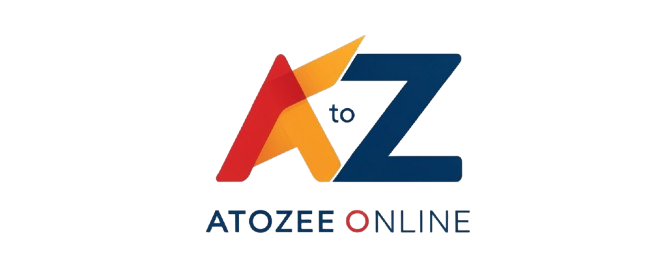Mortgage Calculator

MORTGAGE CALCULATOR
INTRODUCTION:
The journey to homeownership is a thrilling adventure, but it often involves navigating a landscape filled with complex financial decisions. One tool that can be your guiding star in this process is the humble yet powerful mortgage calculator. Let’s delve into the world of mortgage calculators, exploring their components, benefits, and how they empower individuals to make informed choices on their path to acquiring a home.
Components of a Mortgage Calculator:
- Loan Amount:
The primary component of the loan amount is the principal, which is the actual amount borrowed. It is the initial sum that the borrower receives and agrees to repay, typically with interest, over a specified period. - Interest:
Interest is an additional amount charged by the lender for the privilege of borrowing money. It is calculated based on the interest rate and the outstanding balance of the loan. The interest adds to the total repayment amount over the life of the loan. - Fees and Charges:
Some loans may include fees and charges, such as origination fees, closing costs, or processing fees. These additional costs contribute to the overall loan amount and are often factored into the repayment plan
Factors Influencing the Loan Amount:
- Purpose of the Loan:
Different types of loans serve various purposes, and the loan amount is determined by the specific needs of the borrower. For example, a mortgage loan for purchasing a home will have a different amount than a personal loan for debt consolidation. - Creditworthiness:
The borrower’s creditworthiness, as reflected in their credit score and financial history, plays a crucial role in determining the approved loan amount. A higher credit score may qualify the borrower for a larger loan amount and more favorable terms. - Income and Debt:
Lenders assess the borrower’s income and existing debt obligations to gauge their capacity to repay the loan. The debt-to-income ratio is a key factor in determining the suitable loan amount. - Collateral:
Secured loans, where the borrower pledges assets as collateral, may influence the approved loan amount. The value of the collateral can impact the lender’s willingness to offer a larger loan. - Calculating the Loan Amount:
To calculate the loan amount, borrowers should consider their specific financial needs, the purpose of the loan, and their ability to repay. Online loan calculators can assist in estimating monthly payments, total interest costs, and the overall loan amount based on the selected terms.
In summary, the loan amount is a critical element in the borrowing process, encompassing the principal, interest, and potential fees. Borrowers should carefully evaluate their financial situation, creditworthiness, and the purpose of the loan to determine the appropriate loan amount and secure favorable lending terms.
Interest Rate:
- Simple Interest:
Simple interest is calculated solely on the initial principal amount borrowed or invested. It does not take into account any interest that accumulates over time. - Compound Interest:
Compound interest includes not only the interest on the initial principal but also the interest on any accumulated interest. This compounding effect can lead to exponential growth or accumulation of debt. - Fixed Interest Rate:
A fixed interest rate remains constant throughout the loan or investment term. Borrowers and investors know exactly how much interest they will pay or earn over the life of the transaction. - Variable or Adjustable Interest Rate:
A variable or adjustable interest rate can change over time based on fluctuations in an underlying benchmark, such as the prime rate. This type of rate is often associated with loans like adjustable-rate mortgages. - Nominal Interest Rate:
The nominal interest rate is the stated interest rate on a loan or investment, not adjusted for inflation or compounding. It provides a straightforward percentage without accounting for other factors. - Real Interest Rate:
It represents the actual purchasing power gained or lost through an investment or loan. - Prime Rate:
It often serves as a benchmark for various other interest rates, influencing the rates offered on loans and credit cards.
Factors Influencing Interest Rates:
- Economic Conditions:
Economic factors such as inflation, unemployment rates, and overall economic growth can impact interest rates. - Creditworthiness:
An individual’s creditworthiness, as reflected in their credit score and financial history, influences the interest rates they are offered on loans and credit products. - Loan Term:
Shorter-term loans may have lower rates, while longer-term loans may carry higher rates due to increased risk. - Market Forces:
Supply and demand in the financial markets can influence interest rates. Higher demand for loans or investments may lead to higher rates, while lower demand may result in lower rates. - Central Bank Policies:
Central banks, such as the Federal Reserve in the United States, set benchmark interest rates that can influence the rates offered by commercial banks.

Significance of Interest Rates:
- Cost of Borrowing:
For borrowers, interest rates determine the cost of borrowing money. Higher rates mean higher overall repayment amounts. - Return on Investment:
For investors, interest rates impact the return on investments. Higher rates can lead to increased returns, while lower rates may affect investment income. - Economic Stimulus or Control:
Central banks use interest rates as a tool to stimulate economic growth or control inflation. Lower rates encourage borrowing and spending, while higher rates can cool down an overheated economy.
Understanding the various types of interest rates, the factors influencing them, and their significance in financial transactions empowers individuals to make informed decisions when borrowing, investing, or managing their finances.
Loan Term:
- Length of Repayment:
The loan term specifies the number of months or years the borrower has to repay the loan in full. Common loan terms include 15, 20, or 30 years for mortgages, and shorter periods for personal loans or auto loans. - Impact on Monthly Payments:
The loan term directly influences the amount of the monthly payments. Shorter loan terms typically result in higher monthly payments but lower overall interest costs, while longer terms may yield lower monthly payments but higher total interest payments over the life of the loan. - Fixed or Variable Term:
The loan term can be fixed, remaining constant throughout the repayment period, or variable, allowing for adjustments based on certain factors. Variable loan terms are more common in adjustable-rate mortgages. - Balloon Payments:
In some cases, a loan term may include a balloon payment, requiring the borrower to make a larger final payment to settle the remaining balance. This often occurs in certain types of mortgage agreements.
Factors Influencing Loan Term Choices:
- Financial Goals:
Borrowers consider their financial goals when choosing a loan term. For instance, someone aiming to pay off their mortgage quickly may opt for a shorter loan term, while others seeking lower monthly payments may choose a longer term. - Affordability:
Borrowers assess their financial capacity to make monthly payments. Longer loan terms can offer more manageable monthly payments, making them suitable for individuals with tighter budgets. - Interest Rates:
The prevailing interest rates in the market can influence the choice of a loan term. Higher interest rates may motivate borrowers to choose shorter terms to reduce overall interest costs. - Loan Type:
Different types of loans come with varying standard terms. Mortgages, for example, often have longer terms compared to personal loans or auto loans. The type of loan and its intended use can guide the selection of a suitable term.
Loan Purpose:
- The purpose of the loan can impact the chosen term. For instance, a borrower financing a long-term investment like education may opt for a longer repayment period, while someone consolidating short-term debt may prefer a shorter term.
Considerations When Choosing a Loan Term:
- Total Interest Costs:
Evaluate the total interest costs over the life of the loan. Shorter terms generally result in less interest paid, while longer terms may lead to higher overall interest expenses. - Monthly Budget:
Consider your monthly budget and choose a loan term that aligns with your financial capacity. Ensure that monthly payments are manageable within your current and future financial circumstances. - Financial Flexibility:
Assess your need for financial flexibility. Longer terms provide lower monthly payments, offering more flexibility, but may result in higher total interest costs. - Future Plans:
Consider your future plans and financial outlook. If you anticipate changes in income or expenses, choose a loan term that accommodates these changes.
Down Payment:
- Amount Paid Upfront:
The down payment is the initial sum paid at the outset of a purchase transaction. It is a percentage of the total cost of the asset being acquired. - Percentage of Purchase Price:
The typical down payment percentage varies but is often around 20% for home purchases. However, the percentage can be lower or higher depending on the type of loan and specific lending requirements. - Reduction of Loan Amount:
The down payment reduces the overall amount that needs to be borrowed. A higher down payment means a lower loan amount, potentially affecting the interest rate and monthly payments. - Loan-to-Value Ratio:
The down payment contributes to the loan-to-value (LTV) ratio, which is the ratio of the loan amount to the appraised value of the asset. A lower LTV ratio often results in more favorable loan terms. - Impact on Interest Rates:
A larger down payment may lead to more favorable interest rates, as it demonstrates to lenders that the borrower has a higher level of financial commitment and lower risk. - Mortgage Insurance:
When the down payment is less than 20% for a home purchase, lenders may require the borrower to pay for mortgage insurance to protect against default. A higher down payment can eliminate or reduce the need for mortgage insurance.
Factors Influencing Down Payment Choices:
- Loan Type:
For example, conventional mortgages often require a higher down payment compared to government-backed loans like FHA or VA loans. - Financial Capacity:
The borrower’s financial capacity plays a significant role in determining the down payment amount. Individuals with more savings or financial resources may choose to make a larger down payment. - Asset Type:
The type of asset being purchased influences the down payment. For instance, real estate transactions often require a substantial down payment, while down payments for other assets like cars may vary. - Lender Requirements:
Lenders may have specific requirements regarding down payments. Understanding these requirements is crucial for borrowers seeking financing. - Market Conditions:
Economic conditions and real estate market trends can influence down payment choices. In a competitive housing market, a larger down payment may strengthen an offer.
Considerations When Making a Down Payment:
- Affordability:
Consider your financial situation and ensure that the chosen down payment is affordable within your budget. - Loan Terms:
Understand how the down payment affects loan terms, including interest rates, monthly payments, and the need for mortgage insurance. - Emergency Fund:
Maintain an emergency fund even after making a down payment to handle unexpected expenses or changes in financial circumstances. - Future Financial Goals:
Consider how the down payment aligns with your future financial goals. It’s essential to strike a balance between making a substantial down payment and maintaining financial flexibility. - Property Taxes:
Some calculators allow you to estimate annual property taxes. Factoring this into your calculations provides a more accurate representation of your financial commitment. - Homeowner’s Insurance:
Similar to property taxes, homeowner’s insurance is a vital consideration. Including an estimate in your calculations ensures a comprehensive overview of your potential monthly expenses. - Private Mortgage Insurance (PMI):
If your down payment is less than 20%, PMI may apply. Calculating this cost helps you understand its impact on your monthly payments. - Homeowners Association (HOA) Fees:
For properties within an HOA, factoring in these fees provides a complete picture of homeownership costs.

Benefits of Using a Mortgage Calculator:
- Payment Estimation:
A mortgage calculator offers a quick estimate of your monthly mortgage payment, allowing you to budget effectively. - Scenario Analysis:
Adjusting variables enables you to explore different scenarios. You can visualize how a larger down payment or a shorter loan term might affect your payments.
Affordability Assessment:
- Income and Expenses:
Start by thoroughly assessing your current income and existing financial obligations. This includes your salary, bonuses, and any other sources of income, as well as regular expenses such as utilities, groceries, insurance, and debt payme. - Emergency Fund:
Consider the presence of an emergency fund in your assessment. An emergency fund acts as a financial safety net, providing a cushion for unexpected expenses or changes in income. - Future Expenses:
Anticipate any upcoming major expenses, such as education costs, medical bills, or home maintenance. Factoring in future financial goals ensures that you have the capacity to handle additional financial commitments. - Down Payment and Closing Costs:
Include the down payment and closing costs associated with the purchase of a home or other significant assets. These upfront costs can impact your immediate financial situation.
Interest Rates:
- Consider the impact of interest rates on loans. Higher interest rates can significantly affect monthly payments and the overall cost of borrowing.
Considerations for Affordability:
- Comfortable Monthly Payments:
Ensure that monthly payments for loans or mortgages are comfortable within your budget. Strive for a balance that allows you to meet financial obligations without causing undue stress. - Savings and Investments:
Evaluate your ability to continue saving and investing for the future while taking on new financial commitments. Maintaining a healthy balance between spending and saving is essential for long-term financial stability. - Quality of Life:
Consider how new financial commitments may impact your overall quality of life. Assess whether you can still enjoy the lifestyle you desire without sacrificing essential needs. - Financial Flexibility:
Maintain financial flexibility by avoiding overcommitting to fixed expenses. Having room in your budget for unexpected expenses or opportunities ensures adaptability in changing financial circumstances. - Long-Term Goals:
Align your financial commitments with your long-term goals. Whether it’s saving for retirement, education, or homeownership, ensure that your current decisions support your future aspirations.
Benefits of a Thorough Affordability Assessment:
- Risk Mitigation:
Identifying potential financial risks through an affordability assessment helps mitigate the risk of overcommitting to financial obligations that may strain your budget. - Financial Security:
Ensuring that you can comfortably manage your financial commitments contributes to overall financial security and peace of mind. - Smart Financial Decision-Making:
An affordability assessment empowers you to make informed decisions about your financial future, guiding you toward choices that align with your goals and values. - Adaptability:
A thorough assessment enables you to adapt to changes in income, expenses, or economic conditions, ensuring financial resilience. - Comparison Tool:
Use the calculator to compare different loan options, interest rates, and terms. This aids in finding the most suitable mortgage for your needs. - Early Repayment Planning:
If you plan to make additional payments or pay off the mortgage early, the calculator can illustrate how this impacts the overall cost and timeline. - Understanding Total Cost:
The calculator provides a breakdown of the total cost of the loan, including interest paid over the life of the mortgage.
How to Use a Mortgage Calculator:
- Input Details:
Enter the required details, including loan amount, interest rate, loan term, and additional costs like property taxes and insurance. - Review Results:
Analyze the results, which typically include monthly payments, total payments over the loan term, and a breakdown of principal and interest. - Adjust Variables:
Experiment with different scenarios by adjusting variables like interest rates, loan terms, and down payments to find a mortgage that suits your financial goals. - Consider Affordability:
Assess whether the estimated monthly payment aligns with your budget and financial objectives. - Refine Your Search:
Use the insights gained from the calculator to refine your home search, ensuring you focus on properties within your budget.
Conclusion:
In the realm of homeownership, where decisions carry significant financial weight, knowledge is power. Mortgage calculators serve as indispensable tools, offering a clear view of the financial landscape associated with your home financing. By harnessing the capabilities of these calculators, you gain the ability to make informed decisions, ensuring that your journey to homeownership is not only thrilling but financially sound. Visit Now !
FAQs
Q. What is a mortgage calculator, and how does it work?
A mortgage calculator is an online tool that helps individuals estimate their monthly mortgage payments based on various inputs such as loan amount, interest rate, loan term, and down payment. It calculates the principal and interest portions of the payment.
Q. Why is a mortgage calculator useful?
A mortgage calculator is useful for prospective homebuyers to understand the financial implications of a mortgage. It allows users to experiment with different scenarios, adjust variables, and make informed decisions about loan terms and affordability.
Q. How do I use a mortgage calculator?
Using a mortgage calculator is simple. Enter key details such as loan amount, interest rate, loan term, down payment, and other relevant information. The calculator will then generate an estimate of your monthly mortgage payment and other financial details.
Q. What factors does a mortgage calculator take into account?
A mortgage calculator considers the loan amount, interest rate, loan term, down payment, property taxes, homeowner’s insurance, and, if applicable, private mortgage insurance (PMI) and homeowner association (HOA) fees.
Q. How can a mortgage calculator help me plan my budget?
By using a mortgage calculator, you can get a clear picture of your potential monthly mortgage payments. This allows you to assess whether the estimated payments align with your budget, helping you plan for homeownership more effectively.
THANKS TO READ MY ARTICLE ON MORTGAGE CALCULATOR





